Contents
What Are Breathing Exercises?
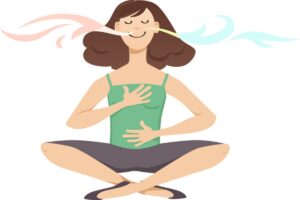
Breathing exercises are a series of techniques that can help manage your stress levels. When you breathe in the proper way, you increase your oxygen intake which opens up more energy for your body to use during stressful or strenuous situations. It also slows down your heart rate and relaxes muscles throughout the whole body so that you’re able to function better under pressure! Breathing exercises aren’t just meant to relieve stress- there are ways to adapt them into daily life if you have asthma or other breathing-related problems.
The easiest forms of deep breathing exercises require little more than standing upright with arms at your side. You’ll be using the diaphragm muscle located right above your stomach to breathe in oxygen, so it’s important to stay standing upright while you practice.
Types of Breathing Exercises
There are various types of breathing exercises you can try, from deep breathing to mindfulness meditation. These exercises help reduce stress and anxiety while promoting a more restful sleep experience. These types are:
Pursed Lip Breathing
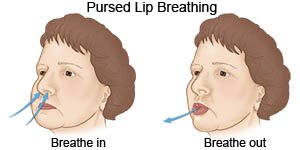
Pursed Lip Breathing is also known as nasal breathing. This exercise requires you to breathe in slowly through your nose, then exhale slowly through pursed lips. It’s a natural way to help calm yourself and promote relaxation. You can do this exercise anytime, anywhere–just teach your body the habit of pursuing your lips before each breath, and making sure you inhale through your nose. Practice this for several minutes at a time at first, gradually increasing the duration of time over weeks or months until you are doing it for ten minutes or more per day.
Diaphragmatic Breathing
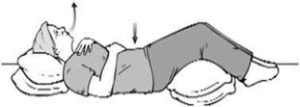
Diaphragmatic Breathing is a gentle and therapeutic way to get oxygen circulating through the body. It’s also a great way to relax and calm down before bed. To practice Diaphragmatic Breathing: lay on your back with your knees bent and your head, neck, and spine in one straight line. Place one hand on your stomach and the other one on your upper chest. Take a deep breath in, making sure to fill up both parts of your lungs (bottom and top). As you breathe out, push out the air from the bottom of your lungs by gently tightening the stomach muscles while relaxing them as you breathe in next time.
Breathe Focus Technique

Breathe Focus Technique is a breathing exercise from yoga. You can do it lying down or sitting up. You take a comfortable position, close your eyes and take a deep breath. Now, imagine your breathing to be a white ball of air in front of your chest. Make the ball touch the bottom of your rib cage, then come back up to the top, still imagining that the ball is going into your lungs. If you notice that your mind wanders while doing this exercise, try to bring it back to the ball inflating and deflating in front of you.
Lion’s Breath
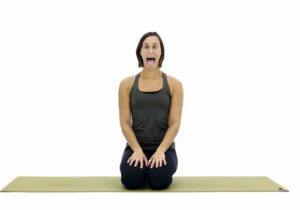
Lion’s Breath is a type of breathing technique that involves a deep, abdominal breath in through the nose and a deep, abdominal breath out from the mouth. This exercise is great for calming yourself down when you’re feeling anxious or overwhelmed.
To practice this type of breathing technique: Inhale deeply through your nose to your abdomen. Exhale deeply through your mouth to your abdomen, allowing your stomach to expand on the inhalation and contract on the exhalation. Repeat this entire process five times or more if needed.
Breath of Fire
Breath of Fire is a type of breathing exercise from Kundalini yoga. It’s based on the idea that you can bring energy into your body by quickly and shallowly breathing in through your nose–sucking in your breath rather than slowly inhaling it. To practice Breath of Fire: Inhale quickly three times, then exhale through either a short or long “ha” sound, or a forceful exhalation from the mouth. Repeat this process 20 to 30 times.
Alternate Nostril Breathing
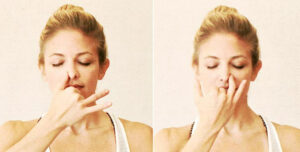
Alternate Nostril Breathing is a simple yoga exercise that is designed to balance the energy in your body by stimulating your “prana” or life force. To practice this type of breathing exercise: Sit comfortably and form a fist with each hand, making sure that you can see the palms of your hands. Each index finger should be touching the middle finger, and the thumbs should be pointing upward. Keep both fists downward. Close your eyes and inhale through both nostrils at the same time for an even count of four seconds. Now, close off one nostril while still exhaling through the other–you can use your thumb to close off one side if you’d like–and then inhale again for four seconds through that same nostril. Repeat this process for three to five minutes or until you can breathe comfortably and evenly through both nostrils.
Square Breathing
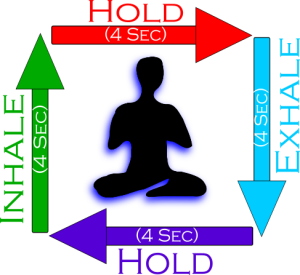
Square Breathing is a type of breathing exercise that requires you to inhale slowly and deeply on the count of four, hold your breath for seven counts (you may close your eyes here), exhale for eight counts (visualizing yourself blowing out any stress or worry as you do so) and hold your breath again without discomfort until the count of four before repeating the entire cycle. The first time you practice this breathing technique, it’s best if you begin by holding each stage for just one minute and then working up to holding each stage longer as you go along. This type of breathing exercise is meant to instill greater relaxation and promote a sense of calm awareness.
Relaxing Breath
The 4-7-8 (or Relaxing Breath) exercise is a breathing technique that was first publicized by Dr. Andrew Weil, who is also the author of “Spontaneous Happiness.” This type of breathing exercise is meant to relax you and slow down your heart rate or breathing patterns. To practice this technique: Inhale through your nose for four counts, hold your breath for seven counts and exhale completely through your mouth on eight counts–counts one through three should take up about the same amount of time as counts four through six do. It’s important that each part of this process takes just as long as the next so that you can get into a rhythm with it.
Equal Breathing
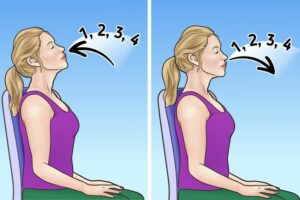
Equal Breathing is a type of breathing exercise that is meant to reduce the effects of stress and anxiety. This type of breathing technique is recommended for those who are looking for an anxiety management technique, as it has been shown to help release serotonin in the brain. To practice this technique: Find a comfortable position–either sitting or lying down–and place one hand on your chest and the other on your abdomen. Close your eyes, inhale deeply through your nose and feel the hand on your chest rise. Hold this breath for just one second before exhaling slowly through your mouth, letting both hands relax at the same time. Repeat this process for five to ten minutes with each session lasting longer than the previous one.
Moon Breathing
Moon Breathing is a type of breathing exercise used in yoga. This technique is considered to be a cooling method that helps you calm down when you feel agitated, angry, or stressed out. To practice this breath: Inhale slowly through your nose for four counts, hold your breath for seven counts and exhale completely through your mouth on eight counts–counts one through three should take up about the same amount of time as counts four through six do. Repeat this cycle for between two and five minutes at a time throughout the day.
Resonant or Coherent Breathing
This type of breathing helps to regulate your breathing pattern, which helps calm you down. To practice this technique: Ideally, position yourself so that you are lying on your back with your legs slightly raised off the floor and one arm resting above your head. Close your eyes and take a deep breath in through your nose for four counts, hold for seven counts, then exhale completely through your mouth on eight counts. Repeat this process for 5-10 minutes with each session lasting longer than the previous one.
Sitali Breathing

Sitali Breathing is a type of pranayama that you can do to reduce stress and anxiety. To practice this technique, close your eyes and take a deep breath in through your nose for four counts, hold for seven counts, then exhale completely through your mouth on eight counts. Repeat this process for 5-10 minutes with each session lasting longer than the previous one.
This type of breathing exercise is an alternative to the 4-7-8 technique. To practice this technique, take a deep breath in through your nose for three counts. Hold that breath for two counts before exhaling through your mouth on four counts. Repeat this process for 5-10 minutes with each session lasting longer than the previous one.
Ujjayi Pranayama
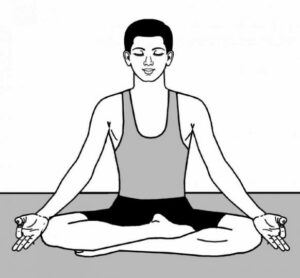
This type of breathing exercise is also known as “ocean breathing.” To practice it: Sit up straight and comfortably so that your ribs are not constricted and there is plenty of room to breathe. Inhale slowly through your nose for five seconds, hold the air in until another five seconds have passed, then exhale at a steady pace through either pursed lips or a straw placed between them for eight seconds–counting aloud during the first 5 seconds and silently during the last 3 seconds. Repeat this process for 5-10 minutes at a time, with each session lasting longer than the previous one.
Humming Bee Breath
Humming bee breath is a pranayama exercise that helps reduce stress and anxiety. To practice this technique: Prepare for it by sitting upright and comfortably so that your ribs are not constricted and there’s enough room to breathe. Inhale slowly through your nose for five seconds, hold the air in until another five seconds have passed, then exhale at a steady pace through either pursed lips or a straw placed between them for eight seconds–counting aloud during the first 5 seconds and silently during the last 3 seconds. Repeat this process for 5-10 minutes at a time, with each session lasting longer than the previous one.
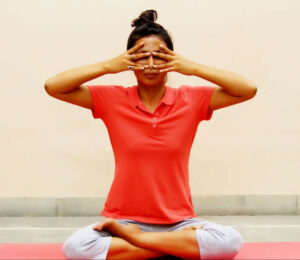
This breathing exercise does not put any pressure on your lungs or muscles as you inhale and exhale. To practice it: Position yourself comfortably in a semi-reclining chair or on your bed with some pillows propped behind you to ease the strain of lying flat. Once you find yourself in this position, slowly breathe in through your nose for four counts, hold for seven counts, and slowly exhale through your mouth for eight counts–counting aloud during the first 5 seconds and silently during the last 3 seconds. Repeat this process for 5-10 minutes at a time, with each session lasting longer than the previous one.
Benefits of Breathing Exercises
Breathing correctly is a way of increasing your body’s oxygen intake and providing more energy for the body during stressful times. This breathing exercises benefits in several other ways such as:
Improves Digestion
It helps to improve digestion by moving your stomach and intestines.
Enhances Stamina
It helps to enhance stamina, lessens fatigue while improving blood circulation, reduces stress or anxiety levels in the body by releasing endorphins which are known as natural painkillers produced by our brain.
Relieves Stress & Anxiety
It enables you to relieve tension from muscles throughout your entire body which results in reducing physical symptoms of stress like headaches; it also relieves mental exhaustion through deep breathing practice.
Promotes Relaxation
When practicing yoga Nidra (deep relaxation), consciously slowing down each breath encourages a deeper state of relaxation than normal sleep does for some people. One’s metabolism slows during this time allowing one’s heart rate to return to its resting place; this is accompanied by a decrease in blood pressure and respiratory rate.
Increases Concentration

Breathing exercises help to increase concentration by stimulating the hormonal secretion of adrenaline, endorphins, and neurotransmitters which improve attention span as well as mental clarity providing the body with more energy to power through difficult tasks or assignments at work/home, etc.
Strengthens Your Immune System
It helps you strengthen your immune system because it increases oxygen supply throughout the cardiac region; this is helpful for those suffering from asthma due to bronchial spasms triggering a faster breathing process that brings relief from severe wheezing attacks.
Improves Posture & Relieves Back Pain
This technique can also be used when tightening abdominal muscles during workout routines aimed at strengthening back muscles allowing the spine to stay in proper alignment.
Improves Memory
Breathing exercises can also help improve your memory by increasing blood circulation throughout the brain which helps you think more clearly and remember things better because of increased oxygen supply.
Helps You Sleep Better

It is known that deep breathing practice before bedtime reduces stress, eases anxiety & nervousness allowing one to fall asleep faster than usual – thus improving sleep quality leading to less fatigue or tiredness during daytime activities/tasks, etc.
Healthy And Glowing Skin
Deep breathing also helps you get a healthy and glowing skin complexion by improving blood circulation which results in less tiredness or fatigue on the face.
Increases Flexibility

Deep breathing helps the body to stay active by increasing oxygen supply throughout all muscles within your body allowing one’s joints, bones & ligaments to be strong, flexible, and mobile enough – thus preventing you from pain or discomfort.
Increases Lung Capacity
With increased lung capacity, it is easier for you to take in more oxygen; this further allows an increase of red blood cell production which provides our heart with better quality of fuel (blood) resulting in improved cardiovascular system performance like higher endurance levels, etc.
How To Perform Breathing Exercises?
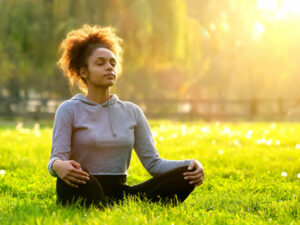
Breathing techniques are often easy to learn and simply require focus.
There are three types of breathing exercises that can be done while sitting in a chair. These include abdominal breathing, concentration breathing, and full-body breath. You should start with abdominal breathing until you feel comfortable with it. Then you can move on to concentration breathing, which is more challenging because it involves using both the breath and the muscles in your abdomen.
Abdominal Breathing
- Put one hand on your belly, just below your belly button, and rest the other hand on your chest. This is how you should feel when you breathe.
- Take a deep breath through your nose so that both of your hands gently rise. Then exhale slowly through pursed lips until all of the air leaves your lungs. You want to make sure that everything goes out evenly so that there are no gaps between breaths or gasps for air. Focus on making each breath long, smooth and quiet to get the results.
Concentration Breathing
- Sit or stand up straight with your feet flat on the floor.
- Place one hand on your chest and the other just below your belly button. This is how you should feel when you breathe.
- Inhale slowly through your nose so that both hands gently rise, then exhale slowly through pursed lips until all of the air leaves your lungs. You want to make sure that everything goes out evenly so that there are no gaps between breaths or gasps for air. Focus on making each breath long, smooth and quiet to get the results.
Full-Body Breath
- Stand with your arms at your sides and bend forward as far as you can while keeping your back straight.
- Bring both hands to the top of your head. This is how you should feel when you breathe.
- Exhale slowly through pursed lips until all of the air leaves your lungs. You want to make sure that everything goes out evenly so that there are no gaps between breaths or gasps for air. Focus on making each breath long, smooth and quiet to get the results.
You can also do breathing exercises while lying down for 10 minutes before bedtime or while getting ready in the morning. Lying down helps you to relax and encourages slow breathing techniques, which can be beneficial before it’s time to fall asleep.
Conclusion
You can make a big difference in your own health and well-being by incorporating breathing exercises into the day. People who do this report feeling more energized, less stressed, and healthier overall. If you’re looking for some new ways to take care of yourself or just want to feel better with as little effort as possible, then try these different types of deep breathing exercises today.
If you are looking for affordable Online Counseling MantraCare can help: Book a trial therapy session
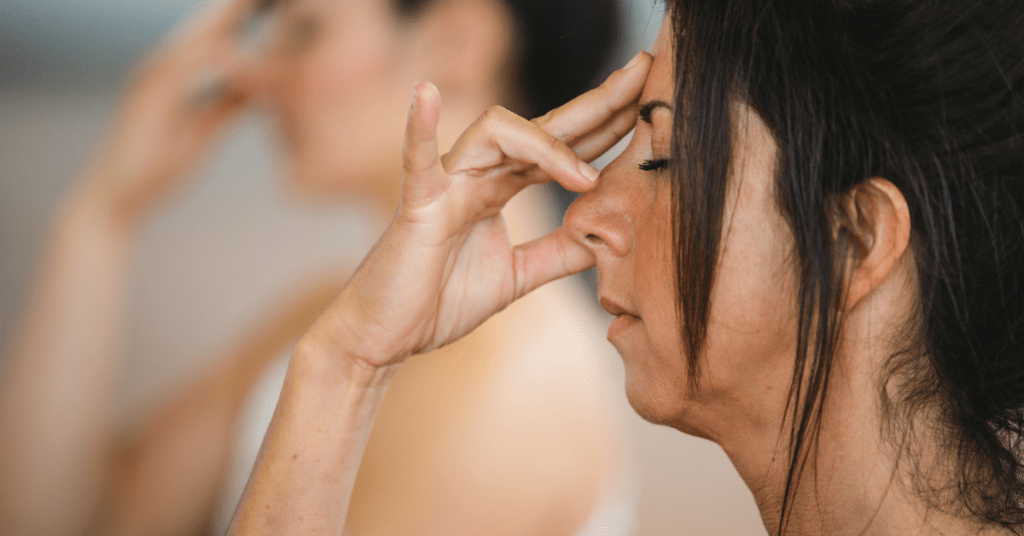


Comments are closed.